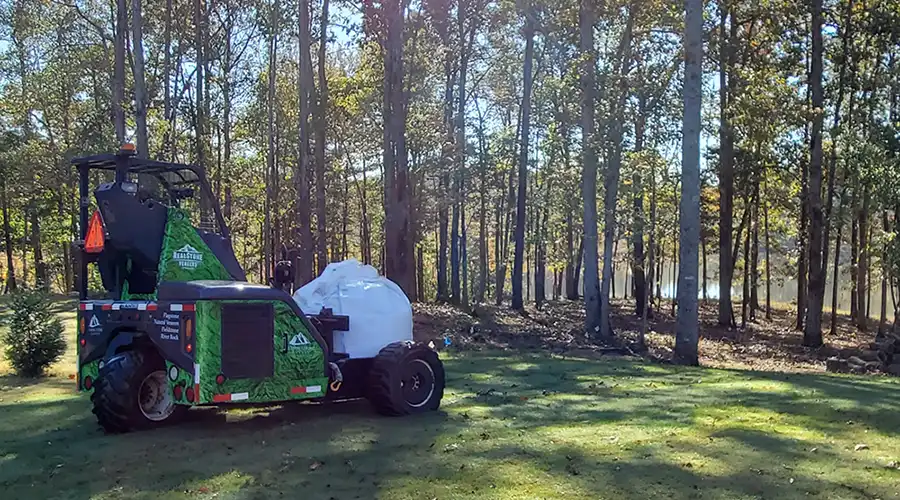Do's & Dont's of Landscaping
Are you looking for an overview of the Do’s and Don’ts of Landscaping? Here we will give you the basic understanding on best practices and also items you want to avoid when working on a landscaping project.
Don’t let landscaping stress you out, it should be a fun creative outlet for personalizing your home and relaxing space. Make sure to keep these Do’s and Don’ts of Landscaping before your next project. Not sure how to go about certain projects to achieve the right look?
Ask our knowledgeable staff… we’ll be glad to offer years for wisdom for what techniques and tools to use that could make the task easier. Most importantly, don’t put unrealistic timelines on yourself… take your time and enjoy the process, as an artist these materials are your medium and the yard is your canvas!
The Do’s and Don’ts of Landscaping can be overwhelming, but we are here to help you with all of your landscaping needs.
Select A Topic To Learn More
Best Practices You Should Do
Call 811 Before You Dig
Call 811 Before You Dig… a FREE 10 minute call can save you hundreds or thousands of dollars in repairs if you accidently cut a cable or fiber-optic line, or possibly our life if you strike a gas line or power line. Cable lines are known for being notoriously shallow… sometimes only 1”-3” under the ground. Water, Gas, and Power are supposed to be at least 18” below grade, but erosion over time can affect this… play it safe and after getting 811 Locate Markings or Flaggings, hand-dig within 3 ft of either side of these markings. Gentle shoveling is tedious but can prevent major problems.



Find your Septic Map & Locate the tank and field lines
Find your Septic Map & Locate the tank and field lines BEFORE driving heavy equipment such as a skidsteer or dump truck across your lawn. Crushed field lines (perforated plastic pipes) can lead to backed up toilets, and a broken septic lid can lead to hazardous environmental conditions and a costly repair.


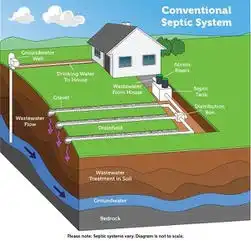
Locate your Property Lines
Locate your Property Lines using the original survey from your home purchase, or pay for a new survey from a licensed professional. Properly locating your boundaries can save you from costly errors such as building a wall or fence over a neighbor’s property line. They may not notice but a new buyer might if a fresh survey is done… possibly leading to the removal of your structure.
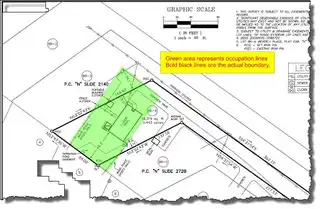


Use plywood as a pathway
Use Plywood as a pathway to protect your nice lawn and landscape from the ruts and damage of continual travel with equipment such as Skid Steers during a project. ¾” Pressure Treated Plywood is ideal for dissipating the heavy weight of 8,000 lb Skid Steers + their cargo, and even large dump trucks.



Observe your yard in Sunny and Wet weather
Observe your yard in Sunny and Wet weather to watch for sunlight / shade conditions around your property, and storm water erosion or standing water problems. Noting areas that get mostly sun or shade will dictate where to plant a garden, where certain trees & shrubs may thrive or struggle, where install shade-loving plants, which type of turf will grow best in each area, and if the only ground cover in a Full Shade area may be stone.
Rainy days are best for spotting storm water problems such as deep erosion from gutter downspouts, settling along the basement foundation holding water puddles which will eventually seep into cracks and cause moisture problems or leaks, and standing water in the lawn that leads to root rot, muddy spots, and mosquito habitats. Use colorful flags to mark these spots in the rain, so their easier to locate for repair during dry weather.


Create a Master Plan for your Landscape.
Create a Master Plan for your Landscape. Decide on features you’d like to have, and start with the infrastructure work to prep for these spaces. First: Grade the landscape for proper drainage, create level pads where needed, and dig footers for walls. Then bury any pipes such as a French Drain System for gutter down spouts and slow draining areas, Irrigation pipes for a Sprinkler system, and wiring for Outdoor Lighting and Invisible Dog Fence. Then add your large features that will require heavy equipment travel, such as an Outdoor Fireplace, placing Accent Boulders or Building a Retaining Wall, digging a koi pond, or installing big semi-mature Ball & Burlap Trees. Once heavy equipment is no longer needed, you can add grass seed or sod to create your lawn, and pine straw, mulch, or decorative stone for the landscape beds. You can always lay a plywood trail to bring a Mini-Skidsteer back later to carry material in… but ideally you won’t want to trample over finished landscape areas.



Know your Limits.
If certain tasks such as removing trees, fine grading with a Skidsteer in a tight space, or lifting heavy boulders into place… are all outside your realm of experience or physical ability, consider hiring a professional for these portions. These tasks can risk danger to your home or body, especially back and body strain from pulled muscles. Keep the projects fun and safe!



Estimate how much material is needed BEFORE starting.
This Do’s and Don’ts of Landscaping tip is all about estimating your materials. Measure the spaces and call us for guidance on how much material to calculate for. We have notes on our Product List such as “Square Ft per Yard” for mulch to figure how much is needed at a 3” depth. Over-buying too much material can be prevented… usually its less expensive to pay for a 2nd delivery of a little more material, than to be stuck with excess and nowhere to use it.

Plan a Budget with Estimated Project Costs.
If you find your budget can’t cover the entire project, our staff can help make suggestions on installing with Phases. Some project might be able to span several months, doing small portions each weekend that work towards an eventual goal.


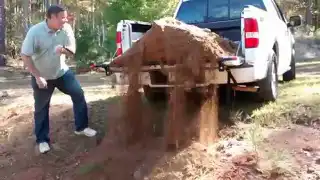
Take Pictures of your Yard or Project Areas.
If you find your budget can’t cover the entire project, our staff can help make suggestions on installing with Phases. Some project might be able to span several months, doing small portions each weekend that work towards an eventual goal.
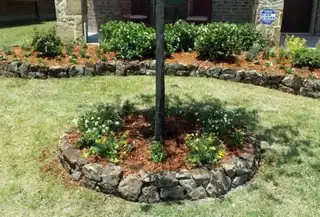


Prepare for Materials to be delivered.
Have a location in mind of where a dump truck can fit and unload material without going off a firm surface (concrete or gravel driveway), and NOT block a garage door or other travel path. If dumping on the driveway, it may help to have a large tarp available for the driver to spread to protect the driveway from staining or impact marks. Also, have a tarp to cover perishable materials from rain. If there’s nowhere to safely dump materials, consider having the materials bagged and placed on pallets. Our delivery forklift can drive through the yard and possibly place the materials close to your worksite if ground conditions are dry and firm enough.



Be Aware of Space Limitations.
Have a location in mind of where a dump truck can fit and unload material without going off a firm surface (concrete or gravel driveway), and NOT block a garage door or other travel path. If dumping on the driveway, it may help to have a large tarp available for the driver to spread to protect the driveway from staining or impact marks, and to cover perishable materials from rain. If there’s nowhere to safely dump materials, consider having the materials bagged and placed on pallets. Our delivery forklift can drive through the yard and possibly place the materials close to your worksite if ground conditions are dry and firm enough.

Create Versatile Spaces.
If you want a back yard space leveled for a kids trampoline, consider placing it in a location that could later be repurposed for a patio & fire pit. Or a rectangular area for a Playground that could eventually become a hobby shed pad as the kids grow and you decide to build a structure on that level space.


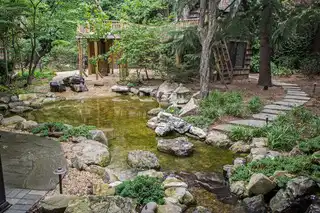
Consider Mature Growth Habits of Plants.
Carefully read plant tags and research what you intend in plant before visiting a nursery. Proper spacing and height considerations can save on costly removals and wasted material later. For example just in the Loropetalum shrub family, the Purple Pixie may grow to knee high… while the Zhuzhou will go to 15 ft high! When buying as small 3 gallon size shrubs, the difference looks minimal, but later will be SUBSTANTIAL!!
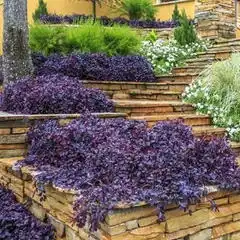

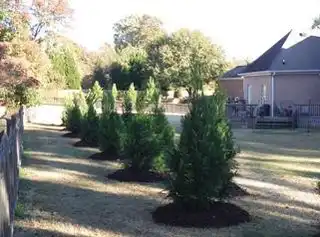
Plan for the Intended Use of the Material.
Our next Do’s and Don’ts of Landscaping tip is all about planning. When buying Flagstone for patios in walkways, it’s available in varying thicknesses from Thin 1”, Medium 1.5”-2”, to Thick 2.5”. Thinner stone saves on cost since it is sold by weight and you’ll get more stone for equal weight to a thicker stone. But thinner stone is prone to breaking if not mortared to a concrete slab surface, which will cost extra in material and installation. Medium thickness is fine for foot traffic if laid loose over a sand surface. Thick flagstone will tolerate lawn mowers and golf carts crossing over it if loose-set in sand. Letting our Stone Yard staff know your intended use will help them know which thickness to guide you to.



Choose materials colors that complement or contrast.
We have a wide variety of products to fit any look!



What We Recommend You Avoid Doing
Don't Start a Project without a Plan
Create a Road Map of what features you want now and possibly later, then connect these points with lawn, pathways, creek beds, and landscape beds. Creating versatile spaces, such as a level terrace in a hill for a Playground now, then to use for a Fire Pit patio or hobby shed later, with save you re-grading costs in the future.

Don't begin installing without first researching.
Chat forums and YouTube are a great wealth of knowledge… plus ask us for advice!
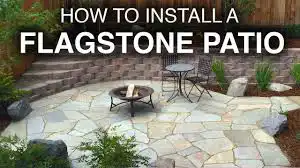
Don't Impulse buy
Don’t buy without first measuring how much area to cover and telling us your intended use of the product and your skill ability. Giving our staff this info will greatly help us to guide you to the best product for your need, in the correct amount, and within your comfort of capability.

Don't Under Buy
Stay tuned for even more Do’s and Don’ts of Landscaping tips. Natural materials are limited resources affected by consumption, weather, and other outside forces. Especially with colors & striping patterns in Flagstone. Plan for an extra 10-20% scrap over what you measured needing. Order multiple deliveries so you can f quantities needed near the end of the project. We sell almost all of our materials in smaller per lb or 5 gallon bucket quantities to help finish projects.

Don't cut corners/avoid necessary steps.
Building a wall or patio without a properly layered or compacted foot/base layer will lead to settling and regrets later.


Don't forget drainage considerations.
GA is notorious for heavy torrential rain storms. Add a French Drain behind ALL walls no matter what size. Plus consider burying ALL your gutter downspouts if you’ll already be re-grading and sodding or landscaping the yard. Emptying all the gutters into a swale ditch or dry creek bed will help limit or stop erosion of the Landscape Beds and rest of the lawn.

Don't build a wall without proper anchors.
Dead-man beams and geo-grid mesh will hold the wall from tipping. Even consider adding curves or wing-walls at the ends to provide additional rigidity from excess hydraulic pressure created by prolonged storm water or ground water inundating the backside of the wall.

Don't forget Underlayment (Weed Barrier Fabric)
Our next Do’s and Don’ts of Landscaping tip is here. Underlayment (Weed Barrier Fabric) below your ground cover materials and creek bed stone is advised. Not only does this greatly help reduce weeds, it also suppresses the red GA clay soil from leaching upward and staining your material. It also aids in stopping erosion from storm water under your material.

Don't overlook valuable tools, equipment, and techniques.
Overlook valuable tools, equipment, and techniques that make DIY projects so much easier and more enjoyable. Research, watch install videos, and then ask our staff! We have years of knowledge that we’re happy to share… we want to see your project succeed and you to enjoy the Landscaping experience! The BEST part is the sense of accomplishment after you tackle an intimidating project that turns out Awesome.

Don't overload your vehicle or trailer.
Know the cargo capacity and tow rating (GCWR) before asking us to load. If you’re not sure, just ask us… chances are we’ve loaded a vehicle just like your’s and we’ll know the limit. Otherwise we’re happy to research and find out… usually it’s just a quick Google search away!
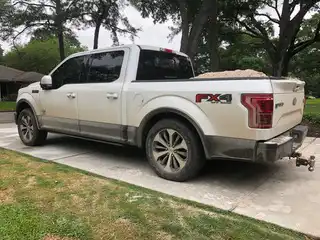
Don't stress your vehicle
Here is another of our Do’s and Don’ts of Landscaping. Don’t stress your vehicle, our deliveries are comparably less expensive than replacing worn or broken parts. Overloading can cause tire blowouts, bent axles, worn out shocks or springs, and even transmission or engine failure. Let us help! We have several options for getting your materials safely to your job site… even placed beside the work space if there’s dry enough ground conditions and sufficient space to maneuver the forklift.

Don't be shy about asking for help.
If you have an idea and not sure what type or size material is best, let us show you the options and tell why we’re recommending them. If tackling a project solo, ask a friend to help with lifting heavy items… Team Lift!

Don't work Harder… Instead Work Smarter!
Don’t work Harder… Instead Work Smarter! Buying mulch or stone in Bulk not only can save money over smaller bagged quantities from Big Box stores… but also can reduce lower back and body strain from carrying heavy bags. A pitch fork or shovel full of material can be easily adjusted to lessen weight by taking smaller scoops, plus these tools reduce bending over by doing the placing.


Don't forget to protect the driveway, lawn, and materials.
Invest in large tarps to lay on the driveway below dyed mulch or soil to prevent staining / keep clean-up easy, and to cover the Dry sand or soil that we deliver… if you don’t get it ALL installed at once, protect it from rain to keep it light and easy to spread. When repeatedly traveling across your lawn with equipment, invest in plywood sheets to lay a trail like a catwalk. Stores can even cut the larger 4’x8’ sheets into half 2’x8’ strips to keep them lighter and easier to carry and to double the length per sheet is laid end to end. This 2’ wide path will prevent wheel barrow ruts and impact from trampling feet on the turf from repeated trips with heavy material.
Make sure to keep all of our Do’s and Don’ts of Landscaping in mind when you plan your next landscape project.









